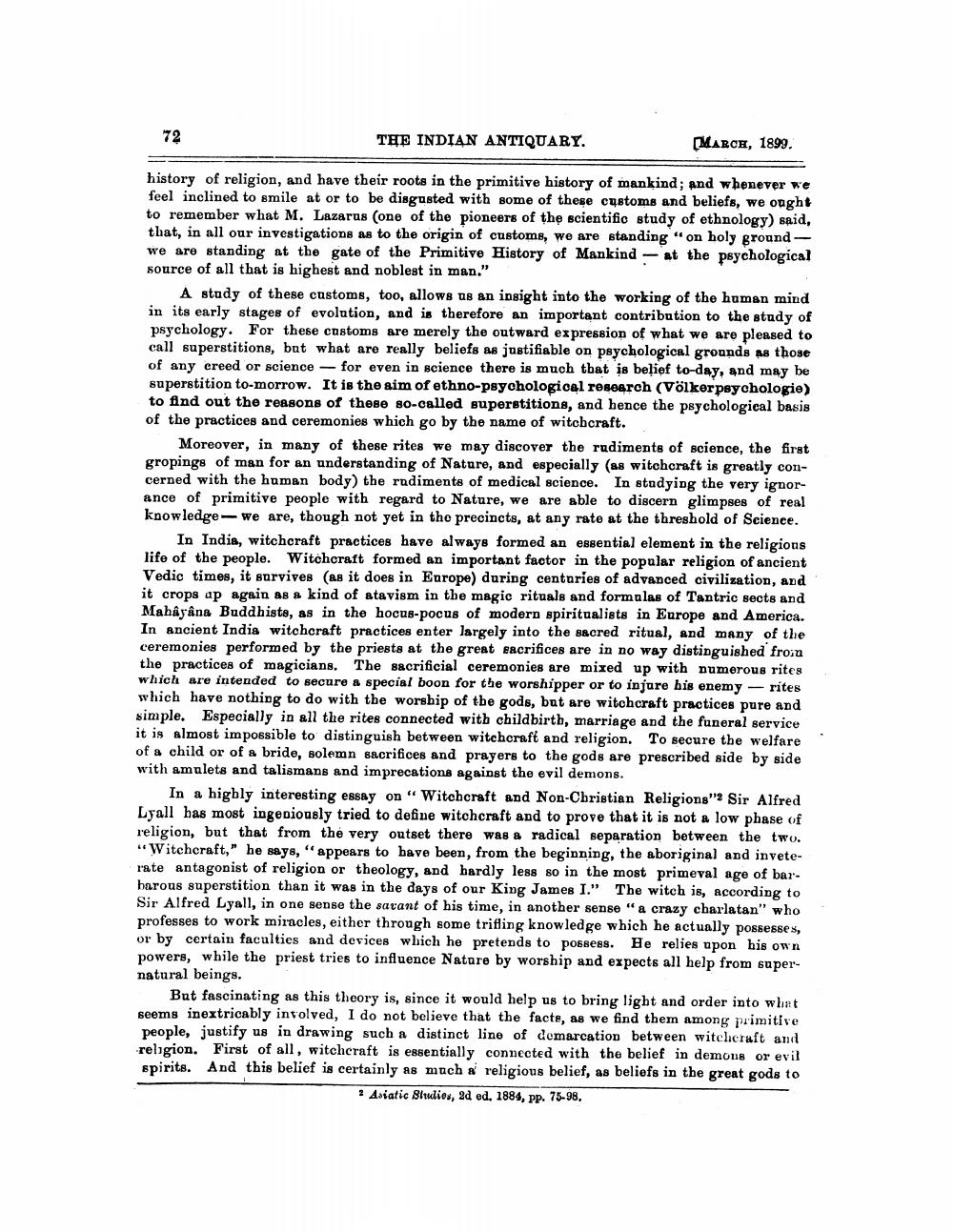________________
72
THE INDIAN ANTIQUARY.
history of religion, and have their roots in the primitive history of mankind; and whenever we feel inclined to smile at or to be disgusted with some of these customs and beliefs, we ought to remember what M. Lazarus (one of the pioneers of the scientific study of ethnology) said, that, in all our investigations as to the origin of customs, we are standing "on holy groundwe are standing at the gate of the Primitive History of Mankind at the psychological source of all that is highest and noblest in man."
[MARCH, 1899.
A study of these customs, too, allows us an insight into the working of the human mind in its early stages of evolution, and is therefore an important contribution to the study of psychology. For these customs are merely the outward expression of what we are pleased to call superstitions, but what are really beliefs as justifiable on psychological grounds as those of any creed or science for even in science there is much that is belief to-day, and may be superstition to-morrow. It is the aim of ethno-psychological research (Völkerpsychologie) to find out the reasons of these so-called superstitions, and hence the psychological basis of the practices and ceremonies which go by the name of witchcraft.
-
Moreover, in many of these rites we may discover the rudiments of science, the first gropings of man for an understanding of Nature, and especially (as witchcraft is greatly concerned with the human body) the rudiments of medical science. In studying the very ignorance of primitive people with regard to Nature, we are able to discern glimpses of real knowledge we are, though not yet in the precincts, at any rate at the threshold of Science.
In India, witchcraft practices have always formed an essential element in the religious life of the people. Witchcraft formed an important factor in the popular religion of ancient Vedic times, it survives (as it does in Europe) during centuries of advanced civilization, and it crops ap again as a kind of atavism in the magic rituals and formulas of Tantric sects and Mahayana Buddhists, as in the hocus-pocus of modern spiritualists in Europe and America. In ancient India witchcraft practices enter largely into the sacred ritual, and many of the ceremonies performed by the priests at the great sacrifices are in no way distinguished from the practices of magicians. The sacrificial ceremonies are mixed up with numerous rites which are intended to secure a special boon for the worshipper or to injure his enemy rites which have nothing to do with the worship of the gods, but are witchcraft practices pure and simple. Especially in all the rites connected with childbirth, marriage and the funeral service it is almost impossible to distinguish between witchcraft and religion. To secure the welfare of a child or of a bride, solemn sacrifices and prayers to the gods are prescribed side by side with amulets and talismans and imprecations against the evil demons.
In a highly interesting essay on "Witchcraft and Non-Christian Religions" Sir Alfred Lyall has most ingeniously tried to define witchcraft and to prove that it is not a low phase of religion, but that from the very outset there was a radical separation between the two. "Witchcraft," he says, "appears to have been, from the beginning, the aboriginal and inveterate antagonist of religion or theology, and hardly less so in the most primeval age of barbarous superstition than it was in the days of our King James I." The witch is, according to Sir Alfred Lyall, in one sense the savant of his time, in another sense "a crazy charlatan" who professes to work miracles, either through some trifling knowledge which he actually possesses, or by certain faculties and devices which he pretends to possess. He relies upon his own powers, while the priest tries to influence Nature by worship and expects all help from supernatural beings.
But fascinating as this theory is, since it would help us to bring light and order into what seems inextricably involved, I do not believe that the facts, as we find them among primitive people, justify us in drawing such a distinct line of demarcation between witchcraft and religion. First of all, witchcraft is essentially connected with the belief in demons or evil spirits. And this belief is certainly as much a religious belief, as beliefs in the great gods to
2 Asiatic Studies, 2d ed. 1884, pp. 75-98.




